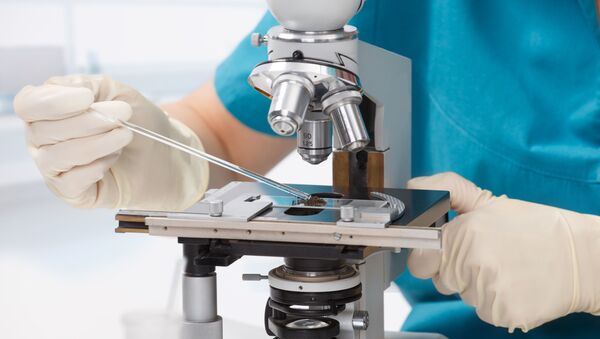The TPU specialists explained that the scanning probe microscopy method with nanometre resolution is based on obtaining a probe response to the interaction of the tip with the surface. There are many reasons for the lack of accuracy of the method. One of these is due to the instability of the cantilever, which ends with the tip.
The results of the study were published in the Journal of Applied Surface Science.
According to the scientists, normally only cantilever oscillations are considered by researchers. The tip vibrates together with the cantilever. However, the tip has its own oscillations and the frequency of these oscillations differs from those of the cantilever. The authors of the study have specifically studied the vibrations of the SWCNT (single-wall carbon nanotubes – ed. note Sputnik) tip.
The TPU and TvSTU researchers have analysed the SWCNT tip displacement from the equilibrium position, using a model of the mathematical pendulum, created a model of the equation of tip oscillations, and established an analytical connection between the tip parameters and the characteristics of its instability.
"Based on the relationships between the tip oscillation, its topography and structural properties, we have analysed the equations of the tip movements in the system 'tip atom – surface atom' and discovered that tip oscillations lead to an increase in the size of a fragment of the investigated surface up to the size of the tip oscillation trajectory", Associate Professor at the TPU Division for Oil and Gas Engineering Vera Deeva said.
The authors of the study proposed implementing the tip oscillation compensation by discriminating the misalignment between the centre of the tip and the centre of the surface segment under the tip in the XY–plane, with their subsequent exclusion from the optical sensor signal using signal modulation.
In the future, the specialists plan to study the possibility of creating SWCNT tips with the given oscillation parameters by placing the atoms of the selected materials in the right sequence, considering the effect of deposition or absence of atoms in a graphene sheet. This can prove useful for many nanotechnology sectors, for example, in medicine, by applying an effect from the inside on blood vessel walls.




